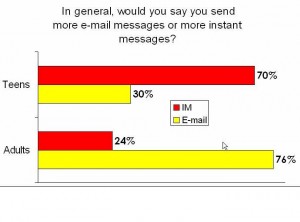From Innovations, a website published by Ziff-Davis Enterprise from mid-2006 to mid-2009. Reprinted by permission.
The move to utility or “cloud” computing shows every sign of reaching critical mass over the next couple of years. But it won’t be driven by corporate data centers. The momentum, instead, is coming from two factors that increasingly dictate the pace of innovation: startups and fear.
In 1991, noted technology columnist Stewart Alsop wrote, “I predict that the last mainframe will be unplugged on 15 March 1996.” Yet as of last year, there were still 10,000 mainframes running worldwide, according to IBM. Was Alsop wrong? Technically, yes, but the shift that he foresaw is happening. It’s just being driven by different factors than he expected.
Technology innovation today follows a strikingly consistent pattern. New companies with no legacy base make the switch first while the people with the most to lose are the last ones to change. Instead, they jump on board when they discover that new technology addresses a significant pain point.
Both forces are evident today in utility computing. Robert Scoble wrote persuasively last November about the “serverless” Internet company. His comments were prompted by a meeting with the CEO of Mogulus, a streaming video firm the claims not to own a single server. What interested me most about Scoble’s remarks is the 65 comments that follow. Many are from other small companies that are building IT infrastructure from the ground up without servers. Some of these companies are offering high-bandwidth services on a very large scale, demonstrating scalability and reliability aren’t a problem. In fact, any startup business today should look first at outsourcing its IT infrastructure before investing in a single square foot of computer room space.
Meanwhile, utility services are actually achieving critical mass in a corner of the mainstream corporate IT market: storage. Services like Amazon’s S3 now have well over 300,000 customers. EMC just joined the fray by launching an online backup service and hiring a top former Microsoft executive to lead its cloud computing initiative.
The storage industry has been a technology innovator recently because storage is a major pain point for many companies. With capacity requirements expanding at 30% to 50% annually, people are desperate to do something to manage that growth.
The rapid adoption of utility computing seems likely to continue, but with a curve that looks like a landscape of the Himalayan mountains. In some segments of the market — like startups — utility infrastructures will become the status quo. In others — like corporate data centers — adoption will come only as the technology addresses specific pain points.
This jagged adoption curve is why there’s so much debate today over the future of the cloud. Contrast Scoble’s observations, for example, with a recent CIO Insight article in which a CTO outlines his reservations about cloud computing or a CIO Insight reader forum where IT managers take issue with Nicholas Carr’s forecast that IT will increasingly become a central utility.
This debate is happening because the need for utility computing is not perceived to be compelling in all cases. Perhaps this is why Gartner predicts that early technology adopters will purchase 40% of their IT infrastructure is a service by 2011. Which means that the other 60% will still be acquired conventionally.
The utility computing train is coming but its arrival won’t occur the same time for all organizations. Check your local schedule.



